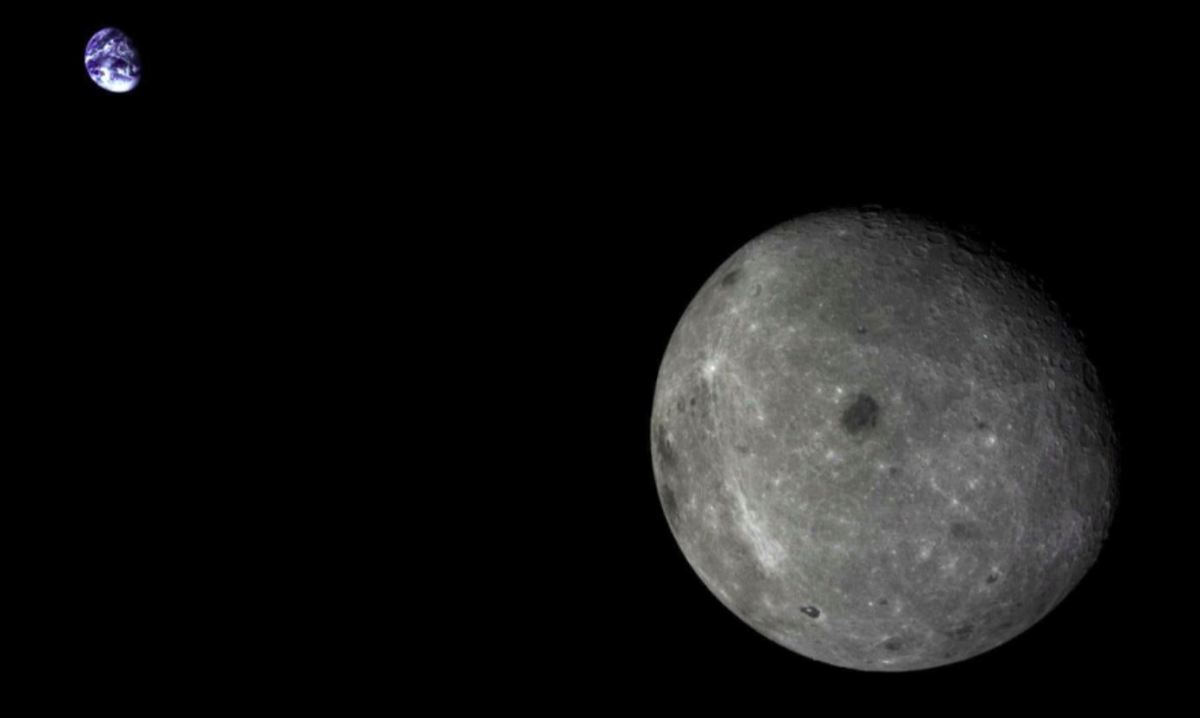HELSINKI — Chang’e-6 is set to make its lunar landing attempt this weekend, in what will be a critical moment in China’s mission to collect the first samples from the far side of the moon.
Chang’e-6 launched May 3 and entered lunar orbit just over four days later. Since then it has been waiting for optimal conditions for its landing attempt. The farside of the moon, never visible from Earth, holds keys to scientific mysteries relating to the moon’s history and composition.
The mission is targeting a landing in the southern portion of Apollo crater within the vast South Pole-Aitken basin. The sun began to rise over the crater on the lunar far side early May 28.
Landing is now set for approximately 8:00 p.m. Eastern Saturday, June 1 (0000 UTC June 2), according to the European Space Agency (ESA), which is involved via a payload developed in Sweden.
The Chang’e-6 lander module will separate from the mission orbiter in lunar orbit in preparation for descent. The landing is timed according to suitable lighting levels on the surface and the lander’s orbit.
A map of the lunar far side, indicating the Chang’e-6 landing zone within Apollo crater. Credit: CNSA
If successful, the lander will go through initial checks and setup. It will then begin drilling and scooping up materials from the surface. These samples, expected to weigh up to 2,000 grams, will be loaded into an ascent vehicle. The ascender will then launch the precious cargo back into lunar orbit for rendezvous and docking with the orbiter. Surface operations will last about 48 hours.
All aspects of Chang’e-6 have been planned and timed exquisitely in order for the mission to have a chance at success. Chinese scientists are excited about the prospects for analyzing the samples, if they are successfully delivered to Earth around June 25.
“I have been analyzing the scientific data of the Chang’e-4 mission that landed on the far side of the moon, and I am constantly excited to have new findings from the ongoing rover data. Therefore, I am particularly excited about the Chang’e-6 mission” Xu Yi, an assistant professor at the Macau University of Science and Technology, told SpaceNews.
“The reasons for the asymmetry in the scale of volcanic activity between the lunar nearside and farside are still subject to different hypotheses. Chang’e-6 will probably collect lunar samples from various sources, including products of local volcanic activity. Dating and compositional analysis of these samples will provide more ground truth information about volcanic activity on the far side.”
Chang’e-6 spacecraft and payloads
The Negative Ions at the Lunar Surface (NILS) payload developed by the Swedish Institute of Space physics and the Detection of Outgassing RadoN (DORN) instrument from France will collect data during the lander’s operational period on the surface. An Italian passive laser retro-reflector is aboard the lander, which is also carrying a small rover. The lander will then suffer damage from the launch of the ascent module, likely ending surface operations.
Chang’e-6 also carried a small, jointly developed Pakistan-Chinese university satellite. Icube-Q captured images of the moon and sun once released into lunar orbit.
Due to the far side of the moon being permanently out of view from Earth, direct communication is impossible. To overcome this, the mission is supported by the Queqiao-2 satellite. That spacecraft is operating in a specialized lunar orbit. Its role is to bounce communications between Chang’e-6 on the far side and ground stations on Earth.
Based on the 2020 Chang’e-5 nearside sample return mission, the ascender and orbiter will likely rendezvous and dock around two days after launch. The ascender will be discarded a further couple of days later. The orbiter would then prepare to leave lunar orbit at a calculated time. It would then release a reentry capsule just ahead of its return to Earth, around June 25.
The Chang’e-6 spacecraft stack showing, for the first time, an apparent lunar rover attached to the mission lander. Credit: CAST
Chang’e-5 collected 1,731 grams of samples, down from the expected 2,000 grams due to a drilling issue. The samples have revealed a number of insights into the moon, its composition and its history. Samples were first made available to Chinese institutions, but access has been expanded to international scientists. NASA researchers have also been granted permission to apply for samples, in an exception to a Congressional prohibition on bilateral activities between NASA and Chinese entities.
Chang’e-6 is part of China’s broader lunar goals. The country will follow up with two missions to the south pole of the moon. These are Chang’e-7 in 2026 and Chang’e-8 around 2028. The country aims to launch its first crewed lunar mission by 2030.
Both sets of missions are part of a plan to establish a permanent lunar base. This project is known as the International Lunar Research Station (ILRS) program, planned for the 2030s. A number of countries and organizations have signed up to the project.
